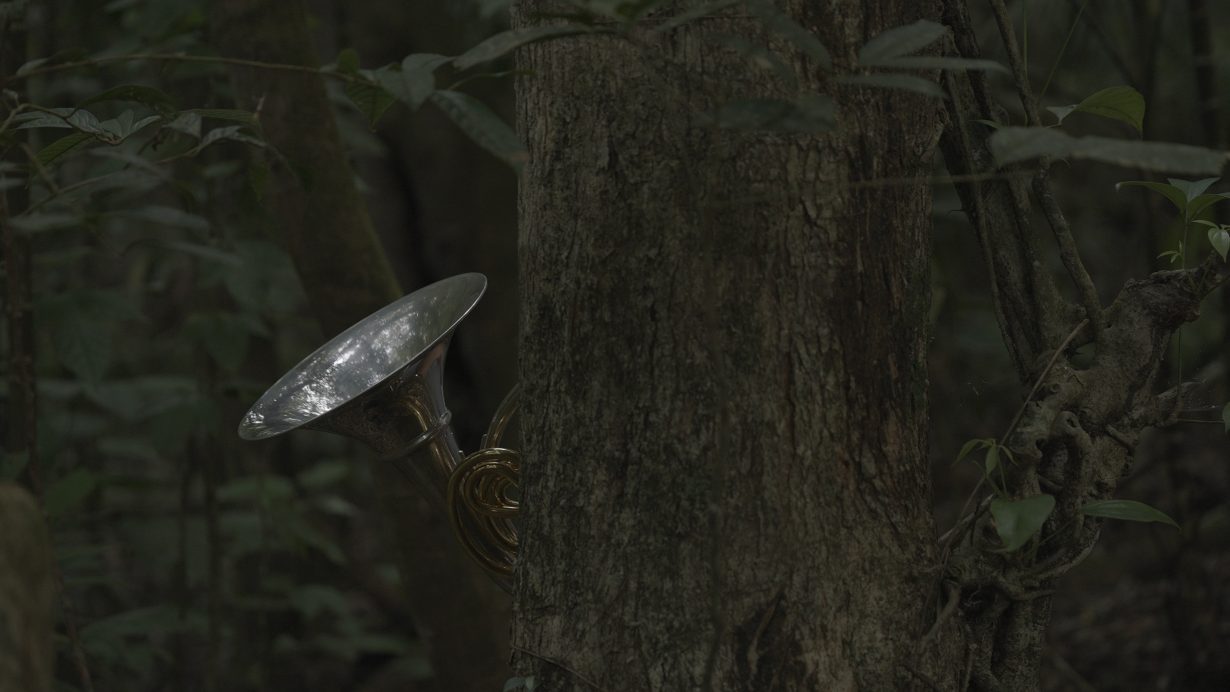ArtReview sent a questionnaire to artists and curators exhibiting in and curating the various national pavilions of the 2024 Venice Biennale, the responses to which will be published daily in the leadup to and during the Venice Biennale, which runs from 20 April – 24 November.
Mark Salvatus is representing the Philippines; the pavilion is in the Arsenale.

ArtReview What do you think of when you think of Venice?
Mark Salvatus There was a time when Manila was called the ‘Venice of the East’ because of the large number of boats which occupied much of the city’s canal. I think of Venice as ‘canals’, as passageways with different directions and turns. You can navigate big and small routes, you can arrive at your destination or you can get lost. I think it’s the same with art.
AR What can you tell us about your exhibition plans for Venice?
MS My exhibition for the Philippine Pavilion aims to be a place for an imaginary journey, an invitation to glide within the space and redistribute energies. I am approaching the exhibition as a rehearsal, a choreography or a stage play that’s not in its final form yet, but close. An aspiration that is waiting to happen.
AR Why is the Venice Biennale still important, if at all? And what is the importance of showing there? Is it about visibility, inclusion, acknowledgement?
MS This will be my first time to visit and experience the biennale and I’m very excited to traverse the diverse programmes and venues as a viewer. The exhibitions and other parallel events contribute to complex conversations of our times and I am honoured to be able to participate in it. I am also interested in what will happen beyond Venice. What will this exhibition lead to? Will these dreams and discussions continue and transform? Venice as a geographical location will remain, but artists will go on to experiment and challenge stability.
AR When you make artworks do you have a specific audience in mind?
MS I live and work with my wife, nine-year-old son and three cats. I don’t have a separate studio. I use any available corners of the house to create artworks. My first audience is inside my home and it always influences my art practice. This everyday moment becomes the process of my artmaking. Presenting the work in an exhibition format is to extend these intimacies, and allows for new relationships with new audiences to emerge. Energies are shared.

AR Do you think there is such a thing as national art? Or is all art universal? Is there something that defines your nation’s artistic traditions? And what is misunderstood or forgotten about your nation’s art history?
MS I grew up in a small town that practices a tradition of hanging fruits and vegetables as an offering to gods and goddesses. It was originally a pagan ritual that was later colonised and became an annual religious festivity in which the locals displayed their bountiful harvest in front of their houses – it is called Pahiyas festival. I should say this was my first exposure to art since our town didn’t have museums or galleries when I was a child. Locally sourced natural materials, foods, crafts and anything that reflects the resident’s life are arranged, hanged and displayed for one day. Helping family and neighbours instal for the festival introduced me to a practice that is social and communal. Filipino curator and artist, the late Ray Albano described Pahiyas as an example of an authentic form of installation art in the Philippines. This tradition is rooted in the locality, and is not practiced nationally. As for the question of whether there is such a thing as national or universal art, I don’t have a certain answer to it; in fact it has always remained a question for me. But I can propose instead ‘natural art’ – an art that not only uses natural materials but takes nature as a context of practice, trying to connect to the local cultural and natural life.
AR If someone were to visit your nation, what three things would you recommend they see or read in order to understand it better?
MS Here are some: Ishmael Bernal’s film Himala (1984), currently streaming on Netflix; Misteryo sa Tuwa, a 1984 thriller directed by Abbo Dela Cruz; Dream Jungle (2003), a novel by Jessica Hagedorn; and Reynaldo Ileto’s historical study Pasyon and Revolution: Popular Movements in the Philippines, 1840–1910 (1979).
AR Which other artists have influenced or inspired you?
MS David Medalla for his playfulness and poetic gestures. Even though he passed away few years back, some of his works continue to transform. Matsuo Basho’s simple observations on everyday life is another inspiration. His haiku poetry makes the everyday always a magical moment.
AR What, other than your own work, are you looking forward to seeing while you are in Venice?
MS I am looking forward to seeing the works of Etel Adnan in the main exhibition and the Timor-Leste Pavilion on their first participation at the biennale. I also would like to see Pierre Huyghe’s major exhibition at Punta della Dogana.
The 60th Venice Biennale, 20 April – 24 November